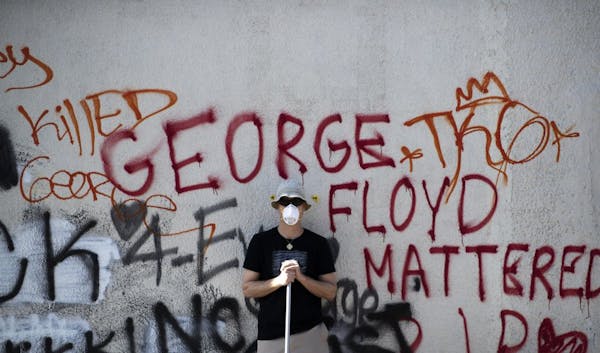Despite strong concerns about the city's response to the destructive riots that followed George Floyd's death, Minneapolis City Council members on Saturday agreed to extend the emergency declaration that boosts the city's ability to bring in more personnel to help quell the violence.
The emergency declaration will now expire June 12. The three-hour-long, virtual council meeting — their first since Floyd's death — served as much a chance to offer solutions as it did to air their grievances.
Just like the residents they serve, multiple council members said they had no idea who to contact when they see buildings burning in flames or when, in the calm of morning, they need to find materials to board them up. They asked for a clearer line in to the incident command center that is determining where police, firefighters and National Guard members get deployed.
Council Member Alondra Cano, whose ward has been the site of some of the most intense destruction, said she has been spent recent nights working with residents to connect hoses from house to house and creating bucket lines to douse buildings with water.
She begged Minnesota Department of Public Safety Commissioner John Harrington to barricade the businesses on Lake Street, where many immigrant-owned businesses have been destroyed in the now-nightly riots.
"That commercial corridor cannot take any more damage," she said. "It just cannot take any more damage, and if it is allowed to take more damage, it will never come back."
Both Floyd's death and the riots — many devastating neighborhoods that are home to people of color — have renewed conversations about the city's racial inequities and about its policing strategies.
As the city burns each night, city officials have also disagreed over the best ways to attempt to rein in the destruction.
As they prepared for the Minnesota National Guard to come to the city in its largest deployment since World War II, some council members questioned whether the large presence would truly help.
"There's got to be something between force — which isn't working — and nothing," said Council Member Jeremiah Ellison. "Is there no strategy between that?"
Ellison said he felt the presence of large numbers of officers using tear gas and rubber bullets was further aggravating the situation.
"I think this mind-set that all we've got to do is get enough force, get enough guns, tighten the grip enough to get ahold of this has proven night after night to be not only a bad strategy but an unmitigated disaster," he said.
Council Vice President Andrea Jenkins, whose district has also suffered large amounts of damage, pushed back. She said that, like Ellison, she asked the police chief on Tuesday not to use tear gas or rubber bullets.
"They did it. Then, Wednesday, they did not do it" early on, she said, "and it still burned down."
Liz Navratil • 612-674-4994

Want to share info with the Star Tribune? How to do it securely

'Safe recovery sites' would offer syringes, naloxone and more to people using drugs. The plan could be in peril.
New Minnesota GOP leaders seek peace with party's anti-establishment wing

Who is Republican Lisa Demuth, Minnesota's first House speaker of color?

